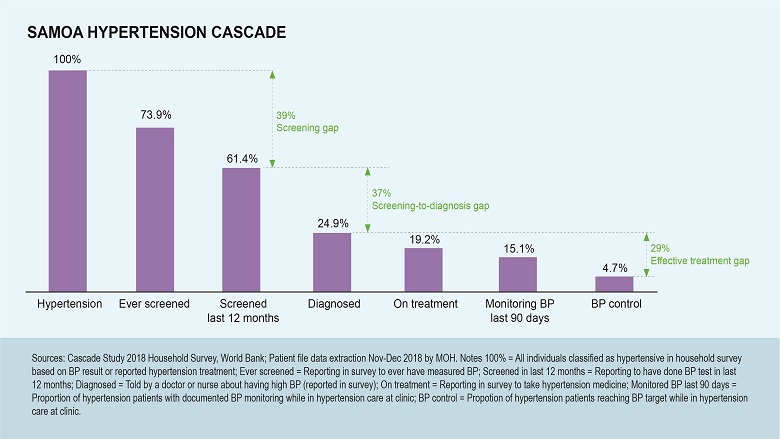As in many Pacific Island Countries, non-communicable diseases (NCDs) are the major threat to the health of the Samoa population. To support Samoa’s national NCD action plan, the This work, funded through the MDTF to Advance UHC, used hypertension as a tracer condition and examined ways to address them. The study looked at hypertension screening, diagnosis, treatment, patient monitoring, and blood pressure (BP) control as indicators for treatment success.
The first key finding of the study raised concerns, as it showed that the rates of hypertension in Samoa albeit already significant, are still increasing. The study found 38% of Samoan adults are hypertensive, a 9% increase from the STEPS 2013 study (28.9%). The risk factors are also increasing; with 90% surveyed classified as overweight or obese.
“The study found that at each stage individuals were falling through the gaps, so in the end only one in twenty hypertensive adults reach the BP target,” says Team Lead Shuo Zhang. “The reasons for this are numerous, and the research team spent much of their time talking with residents, patients, health professionals and other community members to understand what the barriers at each stage might be.”
